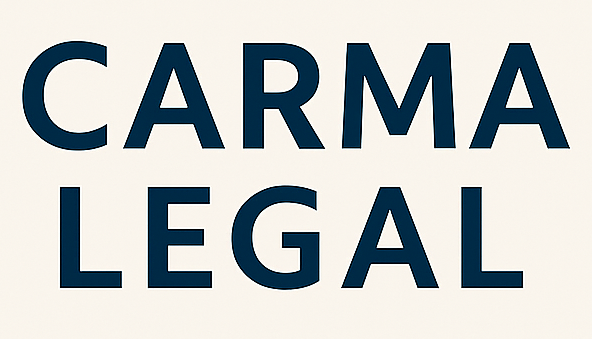If you were injured on someone else’s property due to unsafe conditions, you might be wondering when to seek help from an unsafe premises attorney. Premises liability law holds property owners, managers, and occupiers responsible for accidents caused by negligence. Understanding your rights, gathering evidence, and knowing when to consult legal counsel can make a significant difference in the outcome of your claim.
In this article, you will learn to:
- Understand the basics of premises liability
- Recognize duty of care and negligence
- Identify common injury scenarios
- Collect critical evidence after an accident
- Navigate filing deadlines and compensation factors
- Determine when to contact an attorney for comprehensive legal support
Understand premises liability
What is premises liability
Premises liability refers to the legal responsibility that property owners and occupiers have to keep their premises reasonably safe for visitors. If you are invited onto private or public property and suffer an injury due to a hazardous condition, you may have grounds for a claim. Common unsafe conditions include:
- Wet or greasy floors
- Broken stairs or missing handrails
- Uneven sidewalks and pavements
- Inadequate lighting or security
- Unleashed or aggressive animals
Premises liability applies to a wide range of settings, from retail stores and restaurants to apartment complexes and parking lots.
Who owes a duty of care
Different parties can owe you a duty of care depending on their role and your status on the property:
- Property owners, landlords, and managers
- Tenants who control a portion of the premises
- Occupiers who oversee maintenance and safety
Your classification also matters: - Invitee: You enter the property for a business or mutual benefit. Owners owe the highest duty to inspect and fix hazards.
- Licensee: You enter for personal reasons, such as a social visit. The property owner must warn you of known dangers.
- Trespasser: You enter without permission. The duty of care is minimal, though willful or wanton harm may still be actionable.
Understanding these distinctions helps you assess whether a property owner or occupier breached their duty of care.
Explain duty of care
Duty levels by visitor status
Your status on the property affects the standard of care owed to you:
- Invitee
- Highest level of protection
- Owner must routinely inspect and remedy risks
- Licensee
- Moderate protection
- Owner must warn of known hazards
- Trespasser
- Lowest protection
- Only protection against intentional harm
If you slipped as a paying customer in a store, such as a grocery market, you would be considered an invitee deserving comprehensive safety measures.
Recognizing negligence
Negligence occurs when a property owner or occupier fails to fulfill their duty of care. Examples include:
- Ignoring broken railings on a stairway
- Failing to mop or mark a wet floor
- Leaving sharp debris in walkways
- Lacking appropriate lighting in parking garages
- Not installing secure locks or security personnel in high-risk areas
By establishing negligence, you can demonstrate a direct link between the unsafe condition and your injury. Expert testimony from building inspectors, engineers, or safety consultants can strengthen your claim [1].
Identify common accidents
Slip and trip incidents
Slip and trip falls are among the most frequent premises liability claims. You might face:
- A fall over spilled liquids in a grocery aisle (consult a grocery store slip and fall lawyer)
- A misstep on a torn carpet at a restaurant (talk to a restaurant slip and fall attorney)
- A stumble on a cracked sidewalk outside an apartment building (reach out to an apartment slip and fall lawyer)
These accidents often result in sprains, fractures, or head injuries. Documenting the hazard immediately is essential to prove fault.
Animal bite injuries
If a dog or other animal attacks you on private or public property, the owner may be liable. In many states, dog owners face strict liability for bites:
- Dog bite and attack cases [2]
- Animal bites occurring in parks or on leashed animals [3]
Prompt medical care and evidence collection will support your claim for medical expenses, lost wages, and pain and suffering.
Negligent security events
Inadequate security can lead to assaults or thefts on a property. Examples include:
- Poor lighting in parking lots
- Lack of surveillance cameras
- Unlocked or malfunctioning entry points
Victims of negligent security may file claims against property managers or owners for failing to protect patrons [4]. Compensation can cover physical injuries as well as emotional trauma.
Gather evidence effectively
Document unsafe conditions
Photographic evidence is crucial. You should:
- Take clear photos of the hazard from multiple angles
- Include timestamped images on your phone
- Capture environmental factors such as lighting or weather
Immediate documentation preserves the condition as it was at the time of your accident [5].
Collect witness information
Eyewitness accounts can corroborate your story. When possible:
- Record names, phone numbers, and brief statements
- Ask if anyone captured video footage on their phone
- Note the relationship of each witness to the incident
Witness testimony can fill gaps when surveillance footage or maintenance logs are unavailable.
Preserve medical records
Seeking immediate medical attention not only safeguards your health but also creates a vital record. Be sure to:
- Obtain written incident reports from medical personnel
- Keep copies of all diagnostic tests and treatment plans
- Track follow-up visits and rehabilitation sessions
Medical records establish the extent and timing of your injuries, reinforcing the causal link to the accident.
Describe claim qualifications
Know your deadlines
Most states enforce a statute of limitations for premises liability claims. Failing to file on time can bar your case:
- Washington State: 3 years from the date of injury [1]
- Florida: 4 years for property liability claims (Florida Statutes § 95.11)
- Ohio: 2 years for personal injury claims
Check your state’s deadlines and consider sending prompt written notice to the property owner if required.
Estimate compensation factors
Several elements influence the value of your claim:
- Severity of injuries and medical expenses [6]
- Degree of property owner negligence or recklessness
- Long-term impact on earning capacity and quality of life
- Non-economic damages such as pain, suffering, and emotional distress
- Insurance company tactics aimed at minimizing payouts [7]
Typical settlement ranges
Below is an overview of possible settlement amounts based on injury severity. Ranges vary widely depending on liability evidence and jurisdiction.
| Injury severity | Typical settlement range |
|---|---|
| Minor sprains or cuts | $1,000 – $20,000 |
| Broken bones or moderate soft tissue harm | $20,000 – $100,000 |
| Traumatic brain or spinal cord injuries | $100,000 – $2,000,000+ |
These figures illustrate potential outcomes and underscore the importance of skilled representation to maximize your recovery.
Contact an unsafe premises attorney
When to seek legal help
You should consider consulting counsel if:
- You suffered serious or long-term injuries
- Liability is disputed by the property owner or insurer
- You face mounting medical bills and lost income
- Evidence needs timely preservation
- Complex factors like multiple defendants or overlapping statutes are involved
An early consultation helps you explore strategies for gathering evidence, negotiating with insurers, and, if needed, filing a lawsuit.
Choosing specialized counsel
Selecting the right attorney can shape the trajectory of your claim:
- Look for a premises liability lawyer with a proven track record
- Consider an unsafe property condition lawyer for hazardous maintenance cases
- Contact a negligent property owner lawyer when fault is unclear
- For workplace incidents, reach out to a workplace slip and fall lawyer
Most personal injury attorneys work on contingency, meaning you pay legal fees only if you recover compensation. During your free initial consultation, ask about case evaluations, fee structures, and past verdicts or settlements.
Frequently asked questions
Q: How do I prove a property owner was negligent?
A: You must show the owner owed you a duty of care, breached that duty by failing to address or warn of a hazard, and that breach directly caused your injury. Evidence includes maintenance records, photos, witness statements, and expert testimony.
Q: What if I signed a waiver before my injury?
A: Waivers may limit recovery, but they are not always enforceable, especially in cases of gross negligence or willful misconduct. An attorney can review the document and advise on potential challenges.
Q: Can I still file a claim if I was partially at fault?
A: Many states follow comparative negligence rules, which reduce your compensation by your percentage of fault but do not bar recovery entirely. Consult a lawyer to evaluate your state’s approach.
Q: Will my case go to trial?
A: Most premises liability claims resolve through negotiation or mediation. A lawsuit becomes necessary if parties cannot agree. Experienced attorneys prepare every case as if it will go to trial to ensure the strongest possible position.
Q: How long does a premises liability case take?
A: Case timelines vary based on medical recovery, evidence gathering, and negotiation complexity. Simple claims may settle in a few months, while more complex cases can take a year or longer.
By understanding when and how to call on legal expertise, you can focus on healing while ensuring your rights are protected. If you are considering your next steps, reach out to an unsafe property condition lawyer to discuss a personalized plan.








